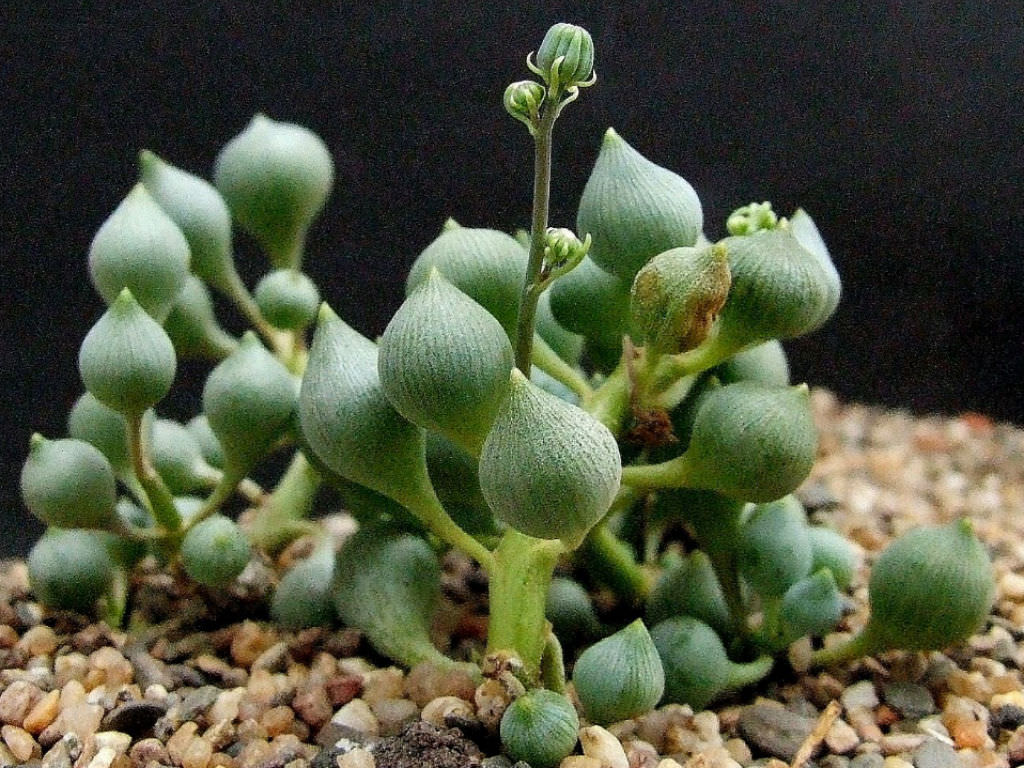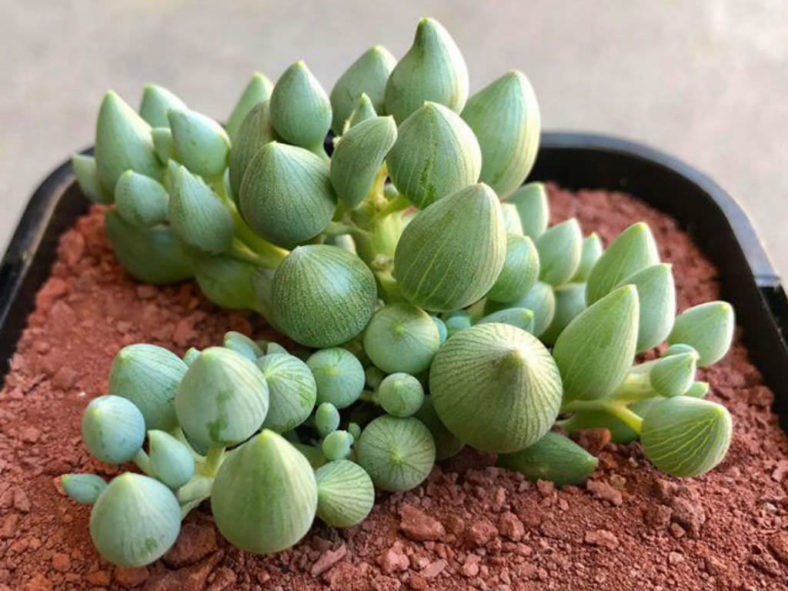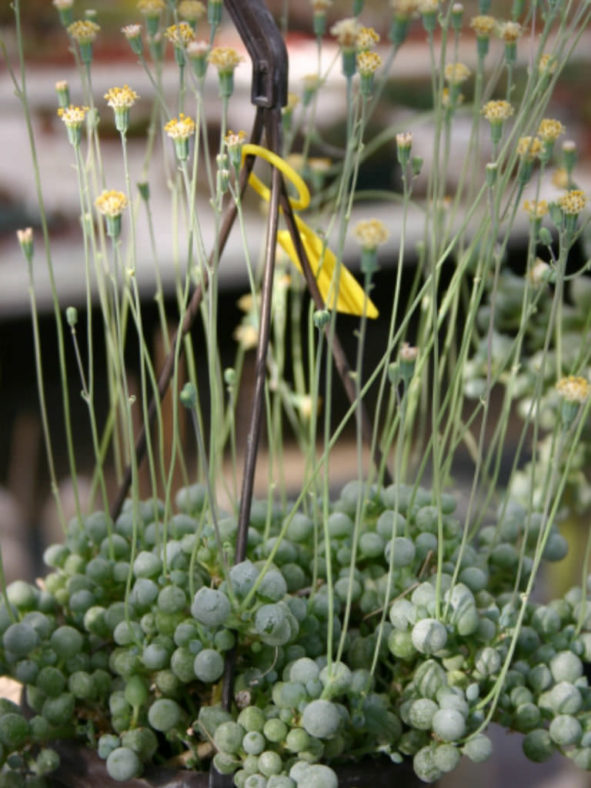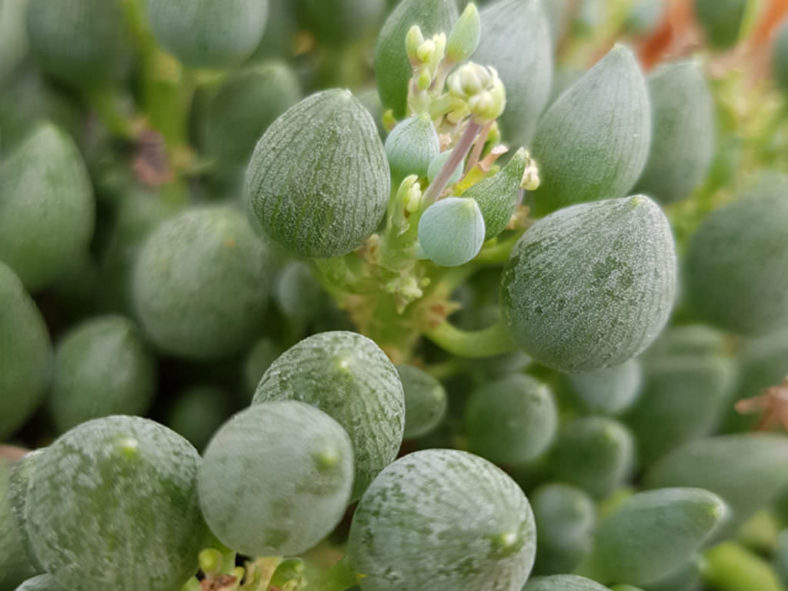Scientific Name
Curio citriformis (G.D.Rowley) P.V.Heath
Common Name(s)
String of Tears, String of Lemons
Synonym(s)
Senecio citriformis
Scientific Classification
Family: Asteraceae
Subfamily: Asteroideae
Tribe: Senecioneae
Subtribe: Senecioninae
Genus: Curio
Etymology
The specific epithet "citriformis (sit-rih-FOR-miss)" means "lemon-shaped" and refers to the shape of the leaves.
Origin
Curio citriformis is native to South Africa, Lesotho, and Swaziland.
Description
Curio citriformis, formerly known as Senecio citriformis, is a beautiful succulent with unique teardrop-shaped leaves on erect or procumbent stems. Leaves are soft green to deep green with translucent longitudinal stripes and a waxy coating. The stems can grow up to 4 inches (10 cm) long, while the leaves can reach up to 1 inch (2.5 cm) in length and 0.3 inches (0.8 cm) in diameter.
From late summer to winter, small heads of creamy-yellow flowers appear on thin, wiry stalks that can grow up to 6 inches (15 cm) tall.
This species is similar in appearance to Curio herreanus.

How to Grow and Care for Curio citriformis
Light: Keep Curio plants in partial shade if outdoors, which is their preference in summer, and bright sunlight if indoors. They will grow in full shade but will become lank and leggy.
Soil: These plants prefer well-draining soil. For growing Curio indoors, using a container with at least one drainage hole at the bottom is essential.
Hardiness: Curio citriformis can withstand temperatures as low as 30 to 50 °F (-1.1 to 10 °C), USDA hardiness zones 10a to 11b.
Watering: Curio plants are drought tolerant, but the soil should never be left dry for too long. They need some water during the growing season, but be careful not to leave the soil wet for prolonged periods.
Fertilizing: The members of this genus can take a bit more fertilizer than other succulents if you want them to grow fast.
Repotting: You do not need to repot Curio plants often. You can do it when the container becomes too small or shallow.
Propagation: These plants can be grown from seeds or cuttings.
Learn more at How to Grow and Care for Curio.
Toxicity of Curio citriformis
Curio plants are toxic. Grow them with great care if you have children, pets, or livestock.
Links
- Back to genus Curio
- Succupedia: Browse succulents by Scientific Name, Common Name, Genus, Family, USDA Hardiness Zone, Origin, or cacti by Genus
Photo Gallery
Click on a photo to see a larger version.



